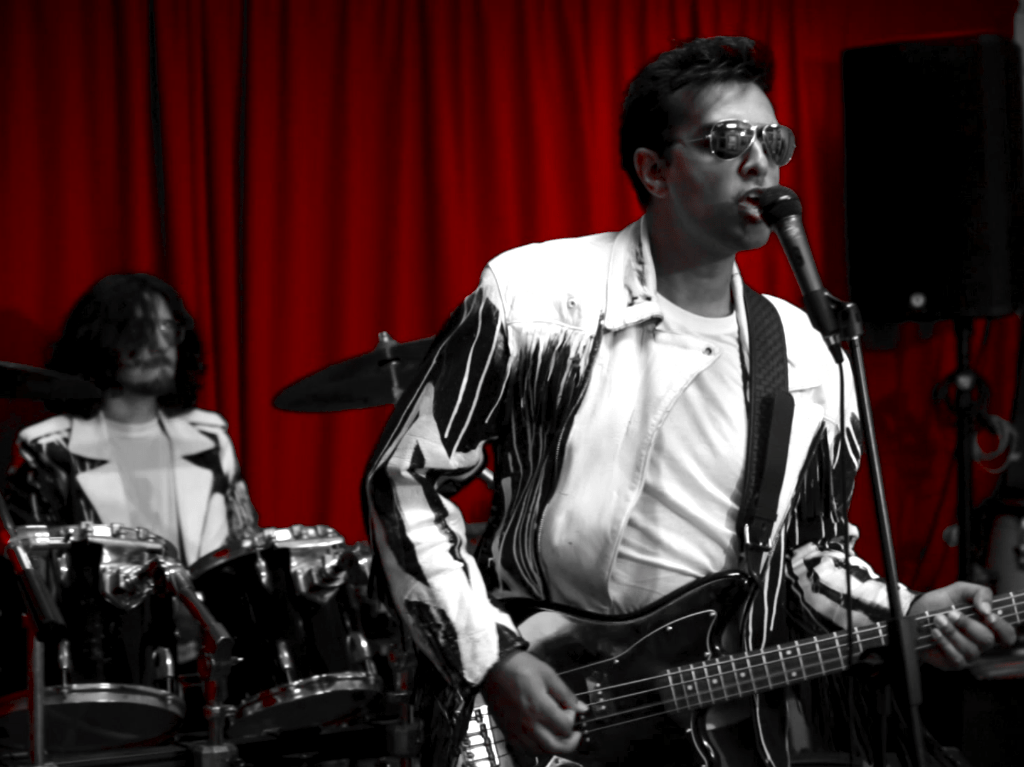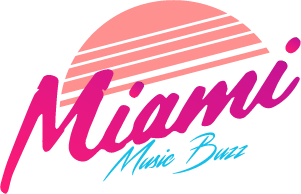
NHS worker, singing bassist and father, Nishant Joshi was a prominent voice during 2020’s government caused fracus of objectively bad lockdown procedures and messaging. Now, as the frontman for KILL THE ICON!, Joshi talks to John Clay about the video for debut single, ‘Buddhist Monk’. And of course, where there is talk of images and music there is potent talk of UK politics, media and the pandemic.
‘The media are quite complicit in a lot of the government’s narratives – there’s a lot of client journalism happening. Ultimately a lot of journalists are fearful that if they ask tough questions then they’ll lose access.’ – Nishant Joshi, KILL THE ICON! (Commenting on the possibility of another lockdown)
Do you have any favourite music videos and have any of them set a standard for your own?
I always loved music videos where the band’s aesthetic oozes from the screen. Just by Radiohead is one of my favourites, because there’s a plot juxtaposed against live playing. Also, the early videos from The Strokes like “Last Nite” and “12:51” were achingly cool.
The main actor in the Just vid conducted a seminar for a theatre studies A Level back in the day. It’s amazing how the music video as a medium has grown in importance as a statement for an artist’s current. Tell us more about your debut video for your band and how it relates to the aforementioned subject of aesthetics as a statement.
We recorded the video when there were still limits on gatherings and mixings, and with the ever-changing restrictions, there was no prospect of remaking Gravel Pit. We were lucky enough to be kitted out by BLK STRIPES (@blk_stripes on Instagram). They made us custom leather jackets with some outrageously cool black and white designs.
They’re almost a bit like what you’d imagine if Jackson Pollock designed a leather jacket. As we were blessed with these gorgeous clothes, we wanted our aesthetic to fit in with the BLK STRIPES aesthetic – minimalist, black and white. So we reduced the clutter and adjusted the colour channels to create a crimson background for contrast.
The power of a simple colour pallet certainly conveys a lack of ambiguity, and your song certainly demands a clear cut rendering of the subject at hand. For readers who missed your previous interview regarding the track, feel free to inform us of its subject matter and what it means to you.
Buddhist Monk tells the story of Thich Quang Duc, the Vietnamese man who burned himself to death in 1963 to protest an oppressive regime.
Are there any lessons in that man’s life that inspired you, or do you derive meaning primarily from his death?
It’s incredible that a man whose entire existence was devoted to peace could choose to meet such a violent end.
So the lesson is to use extreme methods as befits a desperate time? How does one sell that idea to the average Joe, or is such a concept in and of itself an illusion in need of dismantling?
There’s no lesson in it – there doesn’t always have to be a lesson! I just think that Buddhist Monk stands out in history. It transcended the form of protest and became art. Being burned alive is surely up there with everyone’s worst nightmare, so to approach that requires awful things to happen in your head. Of course we saw something similar happen to kickstart the Arab Spring. We know that trauma can trigger mental instability – we lionize people like Thich Quang Duc, but I also wonder what was going through his head, and what the discussions between him and the other monks were like.
Does your single address these questions, or are they challenges for as yet unreleased follow up material?
I could write a book about the Buddhist Monk and I still will have just about scratched the surface. But with KILL, THE ICON! we’re creating a universe for our characters to inhabit. So you can certainly expect some callbacks in other songs. The sharper-eared might notice some references to some of our music from The Palpitations too.
I’m sure there’s quite a bit to get through considering the multiple lives you lead. Considering your other life as a doctor, what is your take on Sajid Javid’s address to the nation on the 20th October? Is this a softening up for a potential lockdown? Your nuanced and authoritative views are most welcome, so, feel free to take up as many column inches which befit this subject.
We’re living the same disaster movie over and over again. I can vaguely appreciate that things were moving at pace in February and March 2020, so there were lots of moving parts and less time for real-time reflection. Once we had major international players all push for divergent strategies in 2020, the Zero Covid ship sailed pretty soon. So even the more risk-averse had to accept that a gradual unlocking was necessary. But simple things like masks worked, and didn’t cause much inconvenience. It’s maddening that we are outliers, once again.
A government minister recently told us that the NHS still has capacity for 6,000 more covid beds. I mean, ok, but that’s not a target to aim for! Right now we’re hurtling towards another lite lockdown, which would be a tremendous failure of government. We’ve lurched from disaster capitalism to plain disaster.
![]()
How do you think another lockdown will be treated by the public? Will the government be taken to task by the largely non critical media?
I think the public would be transiently angry, but we’ve seen that everyone has pretty short memories. The media are quite complicit in a lot of the government’s narratives – there’s a lot of client journalism happening. Ultimately a lot of journalists are fearful that if they ask tough questions then they’ll lose access.
… And where do you fit into all of this? There are rumblings about strike action.
In the USA we’re currently seeing unprecedented levels of concurrent industrial action. There seems to be a cultural shift where workers start to know their worth. They see that the middle-managers and big bosses get to leave work on time, and have their own houses paid for. Strike action when you’re in and around the NHS is obviously a lot more sensitive. People feel as if it’s a personal insult, and that you’re biting the hand that fed you. In reality, the strike action being discussed by doctors and nurses is a desperate cry for help.
Is there a lack of adequate dialogue between the workers and the populace due to media? If so, what can be done about it?
All dialogue between workers and the public is moderated by the media. This has been severely skewed in recent times because of algorithms. There’s much more of a tendency towards creating a hero vs enemy situation now, because that’s what social media rewards. So it’s obvious that the media would always err on the side of painting strikers as villains, because it creates a nice feedback loop of vindication for the consumer. It stirs all the right emotions. On the other hand, trying to persuade the public out of the status quo requires the provision of information, which is quite boring. It means that workers are pitted against other workers.
What would you say is the solution, or at least one of them?
Organise, resist, dismantle existing structures.
Kill The Icon:
